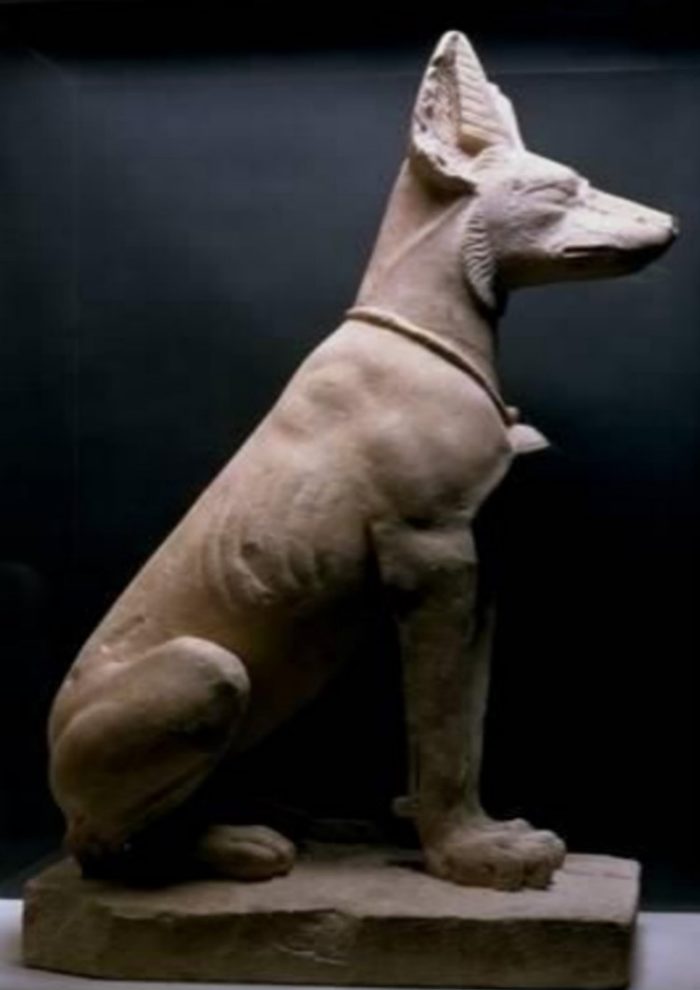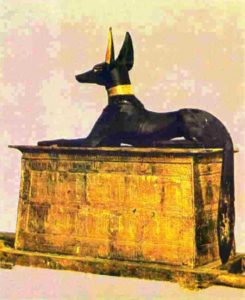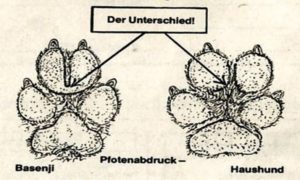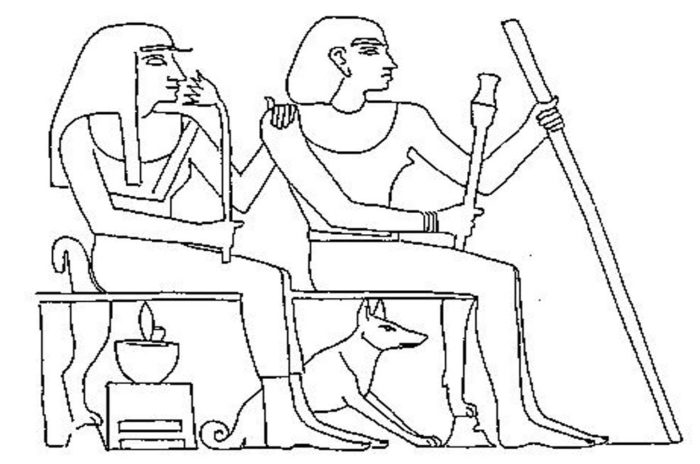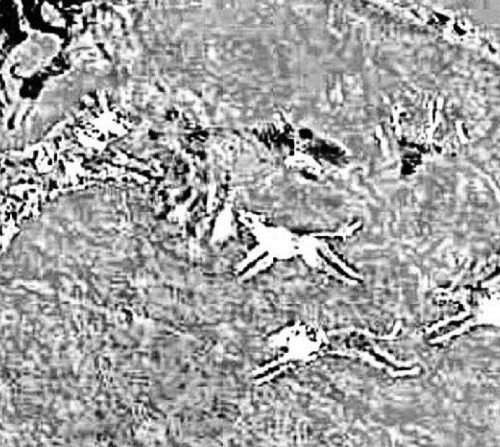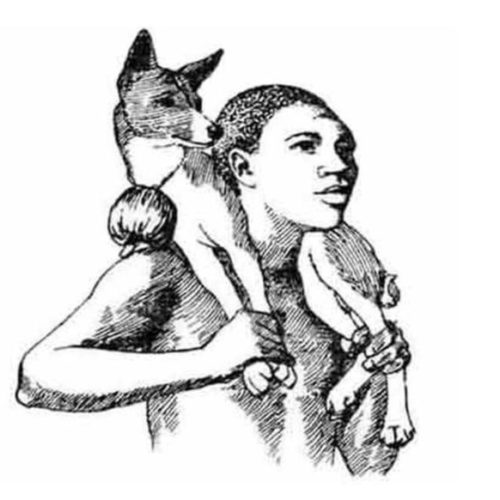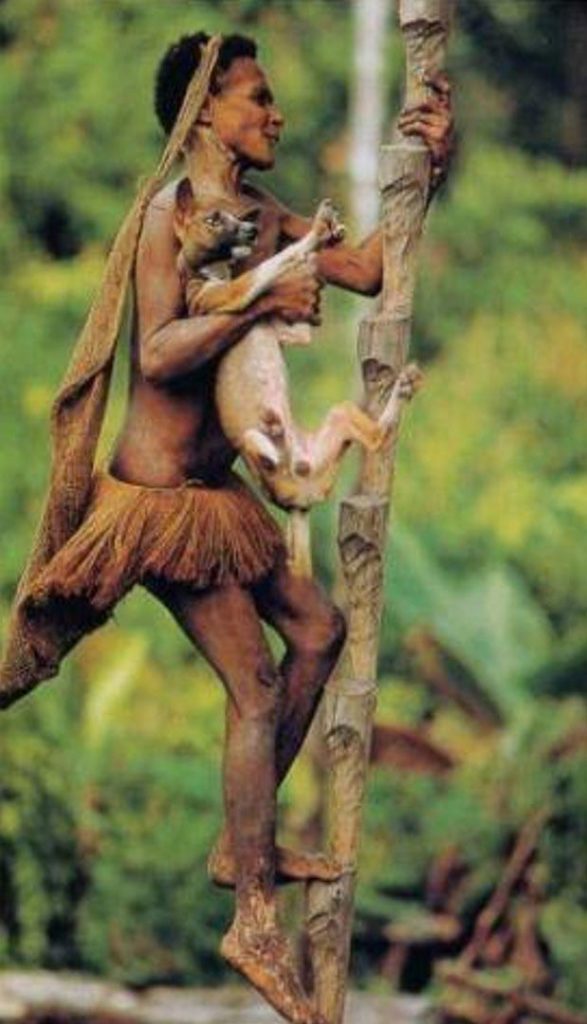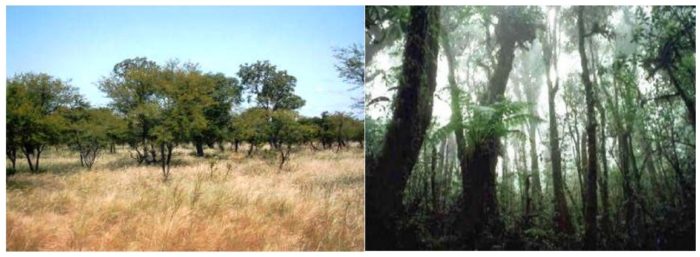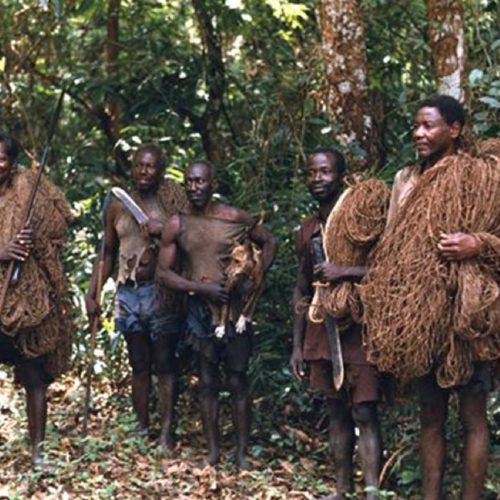Origin & History
Knowing the origin and history of the Basenji will help you understand your dog’s instincts, needs, personality and unique structure and enable you to better care for your pet.
The story of the Basenjis is one of the biggest romances and mysteries of the canine world. Most of it is still unknown and although it makes little difference to the value of a dog, it is human nature to be curious about the evolution of a breed. Especially when it comes to the one like the Basenjis, which has preserved its identity in the depths of Africa during countless ages, and obviously had a history when civilization was still in its infancy.
We can trace Basenjis from the Stone Age to the present day, and it is with the hope of further knowledge surfacing in the years to come that these scraps of information have been pieced together.
Recent DNA testing proves the long-held theory that the Basenji is one of the oldest dog breeds on earth and its domestication began in Africa.
6,000 B.C. cave paintings in Libya depict Basenji-like dogs. Basenjis have lived with the Pygmy tribes in Central Africa for thousands of years in the area that runs from the Congo Basin to South Sudan. The Egyptians had Basenjis shown in relics from as early as 3000 BC. Their curled tails and pricked ears are clearly shown. And they appear to be wearing the typical hunting bells still used in Africa.
Photos from Mereuka’s Tomb in Egypt
Egyptians are indeed counted as some of the oldest dog breeders in the world. One of the possible but controversial theories is that by crossing dogs and jackals a basenji type dog was created. “Jackals and Basenjis do not mate except when under human influence, even if they might have ample opportunity to do so.” (Professor Dr. sc. Senglaub Wildhunde Haushunde Urania Vlg.)
The god Anubis is a jackal
Jackal and Basenji: It is noteworthy that the Basenji paws are different from those of other canine species: their middle toes are partially grown together. It is assumed that Basenjis carry some Jackal genes. A Jackal is a member of any of three small to medium-sized species of predators of the genus Canis, found in Africa.
Maybe the Egyptians in the age of the Pharaohs, are the earliest breeders of Basenjis in the world. Possible Basenjis were bred as family dog or hunting companion.
The first drawings of the type were found in the tombs of the Great Pyramid of Khufu (Cheops), built approx. 2700 BC in the IV Dynasty.
They show small dogs sitting near the feet of their owners or under the chairs. Amongst other tomb furnishings of rich Egyptians and Pharaohs were statues and illustrations of these dogs, which, due to its extremely cat like nature (it moves silently, it is free from dog smells and washes itself like a cat) was highly prized by this civilized nation.
Presumably the first Basenjis reached Egypt as gifts from the Pygmies to the Pharaohs. With the decline of the Egyptian culture, the knowledge about the Basenji also disappeared.
Another presumption is that the Basenjis reached Central Africa as war trophies; Egypt had lost a war against the Sudan and the victors required for their people the at-that-time most valuable things, namely, precious metals, woman and dogs.
With the downfall of Ancient Egypt, knowledge about Basenjis disappeared.
Narratives out of Africa
“Dogs are probably the oldest domesticated animals.”
Basenjis were used by men as helpers and during a hunt occasionally were fed some unwanted bits of meat. They had to be able to independently take care of their food and survival.
Basenjis are early dogs that howl (“yodel”) instead of bark (compare wolf and jackal). They are known in the Bantu language Kiswahili as Schensi dogs. Schensis are among the oldest members of the Canis familaris race. The name Basenji is derived from the Bantu language. Schensi dogs live in the equatorial zone, the hoe-farming culture. Schensis are identifiable by erect ears, reddish fur, and short hair. They were made useful in hunting. In contrast to the Pariahs who live independently from humans, Schensis belong to a person, have a name and are valued either for personal reasons (family dog, hunting dog) or because of their market value. Basenjis live in a pack with their tribes, but they must be clever to find enough food for survival.
Basenji-type Schensi dogs live in the equatorial zone of Africa under similar conditions and relationship with the tribes like in the Philippines, on Sumatra with the Bakta, on West Papua with the Korowai and on Borneo with the Dayak.
Basenjis are hunting helpers at the Efe and the BaAka. The pygmies trained basenjis as hunting dogs for their settled neighbors, the Bantus, and got food especially bananas therefore.
In the then still fertile Sahara Savannah landscape inhabited by nomads, wild animals were domesticated. The nomads began to raise domestic animals, the first of which probably was the dog, because it was helpful in hunting.
Due to climate change (brought about by changes of the direction of the monsoon winds) Sahara Desert developed and the early men migrated with their Basenji-like hunting dogs to the Nile. The people became settlers.
As a consequence of the last climate change in Sahara about 1000 years ago, humans migrated south with their Basenji-type hunting dogs. It was the beginning of the relocation of the Bantu, a migration of considerable magnitude. The Bantu moved toward the east to the large lakes and penetrated south into the Congo forest region, the Ituri Rainforest. The latter today is the remaining habitat of Pygmies and their Basenjis. Basenjis inhabit two different climate zones, the savannah and the rain forest. Basenjis’ coat differs according to climate conditions. Some Basenjis develop a thicker fur than those who do not need it. Through targeted breeding, these differences unfortunately and gradually are getting lost.
The God Egou asks for dog blood
In some African tribes Basenjis are known as ” talking dogs “. Other names are “M’bwa Shenzi” or “M’bwa M’Kubwa M’bwa” translated up and down jumping dogs. You may observe your Basenjis in the field.
In some areas of Africa, it is believed that dogs including Basenjis stole ” The Fire ” for the gods. In some African tribes they are known as ” talking dogs ” or ” witches’ dogs “. The more Basenjis the Medicine man owns, the stronger his powers and healing skills. Dogs, including Basenjis, have always been used as sacrifices in ritual ceremonies.
The Basenjis were used as hunting dogs in their natural homeland, independent to do their duty.
Without their assistance, spear hunting the large wild animals would be impossible. In the rain forest, with all its dangers, they have to be able to independently take care of their food and survival. When the hunt was successful they were thrown a few unwanted bits.
The hunt is more successful if several groups combine to build a larger netting wall, i.e. 100m (300 ft.).
After a successful hunt, the Basenjis storm ahead with clanging bells into the camp and so announce the success of the enterprise. If the hunt was without results, the bells are silenced by stuffing them with grass.
Some documents never written down until much later, mention Basenjis ending up in the cooking pot if they did not measure up to hunting quality.


